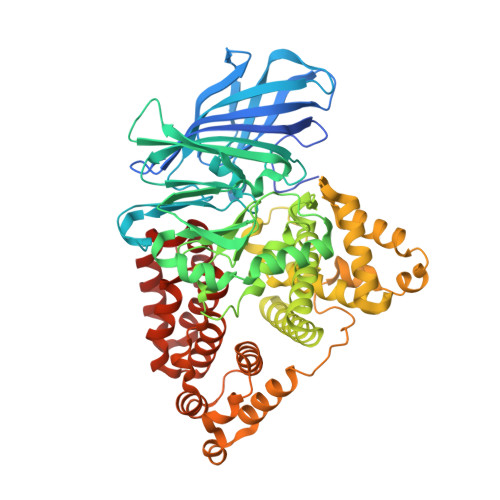Bufexamac ameliorates LPS-induced acute lung injury in mice by targeting LTA4H
Xiao, Q., Dong, N.N., Yao, X., Wu, D., Lu, Y., Mao, F., Zhu, J., Li, J., Huang, J., Chen, A., Huang, L., Wang, X., Yang, G., He, G., Xu, Y., Lu, W.Q.(2016) Sci Rep 6: 25298-25298
- PubMed: 27126280
- DOI: https://doi.org/10.1038/srep25298
- Primary Citation of Related Structures:
5BPP - PubMed Abstract:
Neutrophils play an important role in the occurrence and development of acute lung injury (ALI). Leukotriene B4 (LTB4), a hydrolysis product of epoxide leukotriene A4 (LTA4) catalyzed by LTA4 hydrolase (LTA4H), is one of the most potent chemoattractants for neutrophil. Bufexamac is a drug widely used as an anti-inflammatory agent on the skin, however, the mechanism of action is still not fully understood. In this study, we found bufexamac was capable of specifically inhibiting LTA4H enzymatic activity and revealed the mode of interaction of bufexamac and LTA4H using X-ray crystallography. Moreover, bufexamac significantly prevented the production of LTB4 in neutrophil and inhibited the fMLP-induced neutrophil migration through inhibition of LTA4H. Finally, bufexamac significantly attenuated lung inflammation as reflected by reduced LTB4 levels and weakened neutrophil infiltration in bronchoalveolar lavage fluid from a lipopolysaccharide-induced ALI mouse model. In summary, our study indicates that bufexamac acts as an inhibitor of LTB4 biosynthesis and may have potential clinical applications for the treatment of ALI.
Organizational Affiliation:
The Genetic Engineering International Cooperation Base of Chinese Ministry of Science and Technology, Key Laboratory of Molecular Biophysics of Chinese Ministry of Education, College of Life Science and Technology, Huazhong University of Science &Technology, Wuhan 430074, China.






















